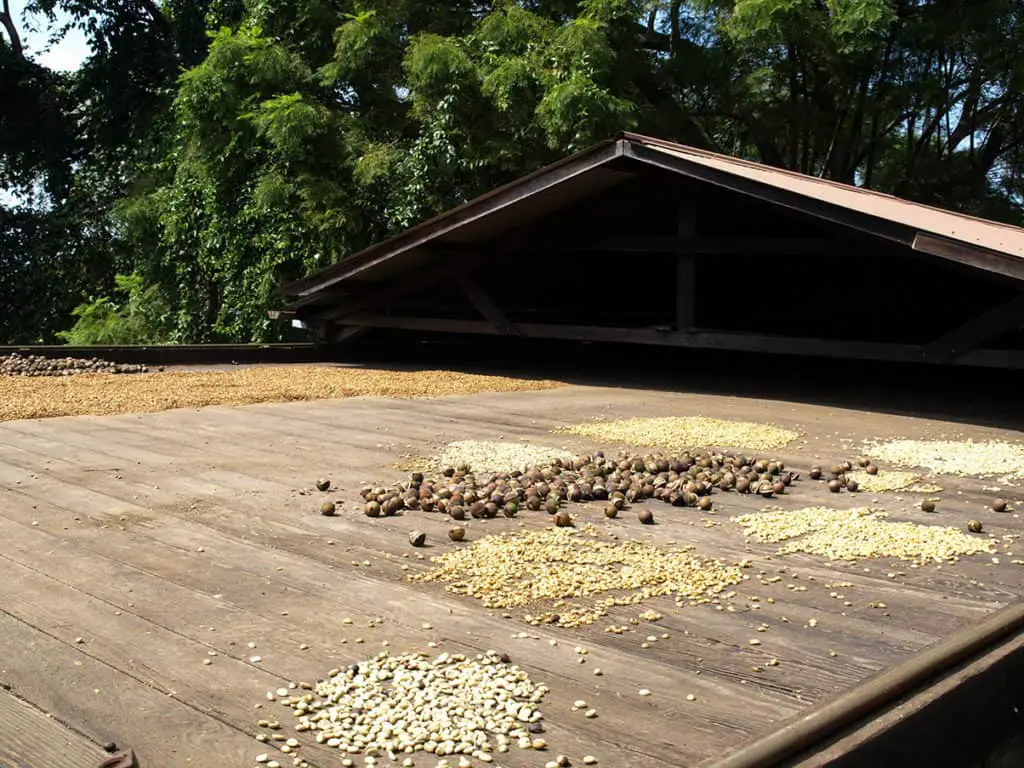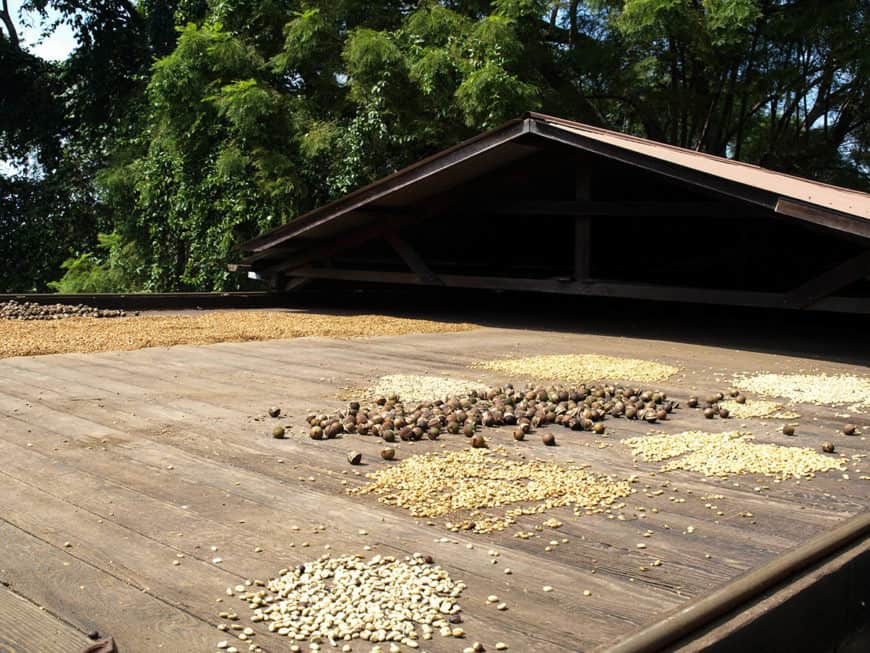
Wet-hulled coffee, known as Giling Basah or semi-washed, is a fast coffee processing method used almost exclusively in Indonesia. High humidity and frequent rain make traditional drying tough, so farmers remove the parchment layer before beans are fully dry, creating a bold, earthy flavor. Curious about wet-hulled coffee’s taste or process? Read on to learn why it’s a favorite for some coffee drinkers and how it’s made.
Origins of Wet-Hulled Coffee
Wet-hulled coffee hails from Indonesia, especially Sumatra, Aceh, and Sulawesi, where small farmers grow beans on hilly slopes. The method wasn’t chosen to stand out but to tackle Indonesia’s humid climate, frequent rain, and limited sunlight. With only a few hours of sun daily and small farm sizes lacking big drying patios, fully drying beans like other regions is nearly impossible.
This process took shape in the 1970s as Indonesia ramped up coffee exports, adapting older methods to speed up production. It lets farmers dry beans quickly—often in days, not months—helping them earn faster in a tough environment. For small-scale farmers, this quick turnaround is a lifeline, supporting their livelihoods.
How Is Wet-Hulled Coffee Made?
The wet-hulled coffee process is built for speed, shaving weeks off traditional methods while keeping many steps similar. Here’s how it works:
- Harvest and Depulping: Farmers remove the coffee cherry’s skin, leaving the mucilage-covered bean.
- Fermentation: Beans ferment overnight to loosen the mucilage.
- Initial Drying: Beans dry to 35–50% moisture, taking 1–2 days in humid conditions.
- Market Sale: Farmers sell these semi-dry beans at local markets, where auctions move fast.
At the mill, the process continues:
- Further Drying: Beans dry to 20–30% moisture, making the parchment brittle.
- Hulling: The parchment is removed, exposing the green bean. About 5–10% of beans may crack, slightly affecting quality.
- Final Drying: Beans dry to 10–12% moisture in 2–3 days, often on tarps or raised beds for cleaner results.
Without the parchment, beans dry faster but risk picking up flavors from the drying surface—dirt or mold can seep in if mills aren’t clean. Recent efforts use raised beds and tarps to improve hygiene, boosting quality for specialty coffee markets.
What Does Wet-Hulled Coffee Taste Like?
Wet-hulled coffee has a bold, heavy taste unlike typical brews. Expect earthy, herbal, or musty notes, with low acidity and less sweetness. The aroma is milder, and the body feels full, almost syrupy. Flavors vary by region—Sumatra’s beans lean earthy, while Sulawesi’s can taste slightly fruity.
This distinct profile comes from early hulling and drying conditions. Some love its richness; others find it too intense. Adding sugar or milk can balance the flavor for new drinkers. It’s a coffee that demands a try to understand its character.
Pros and Cons of Wet-Hulled Coffee
For farmers, wet-hulling is a win. It’s fast, letting them sell beans in days and earn quickly in Indonesia’s tricky climate. Small farmers, often with limited land, rely on this method to produce coffee at all.
For drinkers, the taste splits opinions. Fans of Colombian or Kenyan coffees may dislike its heavy, earthy flavor, which is why wet-hulling stays rare outside Indonesia. But for those who enjoy bold, varied tastes, it’s a treat—each batch differs based on the farm, mill, or drying setup. This inconsistency can be exciting or off-putting, depending on your palate.
The process also risks defects. Early hulling exposes beans to contamination, and poor drying conditions can add unwanted flavors. Cleaner methods are helping, but quality varies.
Final Thoughts
Wet-hulled coffee won’t win everyone over, but it’s a must-try for coffee lovers chasing distinct flavors. Its earthy, full-bodied taste, shaped by Indonesia’s unique process, offers something different. You might not love it, but sampling a cup from Sumatra or Aceh is worth it to experience coffee’s diversity.
Specialty roasters are now embracing wet-hulled coffee, thanks to cleaner drying techniques like raised beds. Look for single-origin Indonesian beans at local cafes or online to give it a try.

